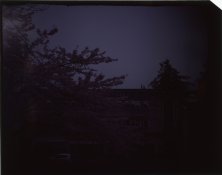himself
Member
- Joined
- Apr 8, 2011
- Messages
- 513
- Format
- Multi Format
Hi,
Before I begin, I've had a look through the forum, but couldn't find a thread, so I hope I'm not repeating someone. Sorry if I am...
I've recently started doing some E6 developing at home and it's been going well, until today that is. Up until now I've done a few 120 films which have come out great, as perfect as I could hope, but today I tried my first couple 4x5 sheets which are terrible.
They have both come out very very dark and due to my lack of experience I'm not sure if they're underexposed or underdeveloped. Other than being very dark they look ok, that is to say, with lots of light shining through them they look ok, there's plenty of shadow detail and the colours look good, but they look almost opaque otherwise.
So my question is, what are the tell tale signs of underdevelopment/exposure beyond the basic "too dark"?
A couple details about the process - Both types of film were done with the Tetenal E6 kit in a Paterson Auto Colortherm using the kit's instructed times, the difference being the 4x5's are done using the rotary print drum. Unfortunately, I couldn't find any volume amounts for using the tank in this way, but it recommends 75ml for a print, and max 150ml, so I used 100ml as a guess (does anyone know what would be the correct fluid amount for this process? I can't find an answer online).
Both sets were shot on Provia 100 using a this (link to LF forum) camera, which up until now using different film, under different conditions, has exposed very accurately.
thanks for any suggestions and here's one of the negs.

Before I begin, I've had a look through the forum, but couldn't find a thread, so I hope I'm not repeating someone. Sorry if I am...
I've recently started doing some E6 developing at home and it's been going well, until today that is. Up until now I've done a few 120 films which have come out great, as perfect as I could hope, but today I tried my first couple 4x5 sheets which are terrible.
They have both come out very very dark and due to my lack of experience I'm not sure if they're underexposed or underdeveloped. Other than being very dark they look ok, that is to say, with lots of light shining through them they look ok, there's plenty of shadow detail and the colours look good, but they look almost opaque otherwise.
So my question is, what are the tell tale signs of underdevelopment/exposure beyond the basic "too dark"?
A couple details about the process - Both types of film were done with the Tetenal E6 kit in a Paterson Auto Colortherm using the kit's instructed times, the difference being the 4x5's are done using the rotary print drum. Unfortunately, I couldn't find any volume amounts for using the tank in this way, but it recommends 75ml for a print, and max 150ml, so I used 100ml as a guess (does anyone know what would be the correct fluid amount for this process? I can't find an answer online).
Both sets were shot on Provia 100 using a this (link to LF forum) camera, which up until now using different film, under different conditions, has exposed very accurately.
thanks for any suggestions and here's one of the negs.











